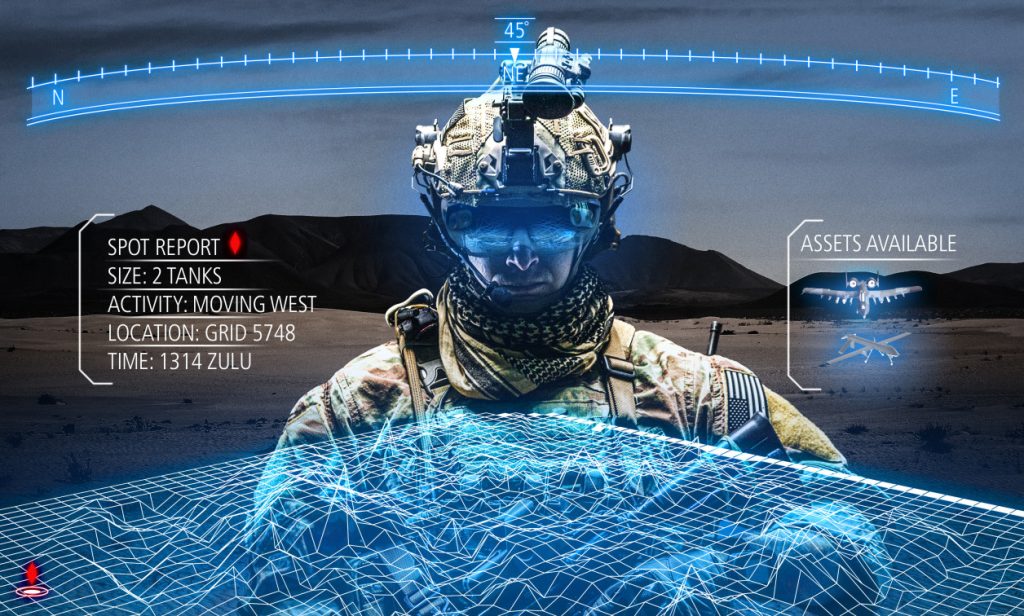How immersive environments, AI, and cognitive warfare are redefining the future battlefield.
In 2022, the “military metaverse” existed mostly as a forward-looking concept, an ambitious projection of how immersive environments might transform training, planning, and combat. In 2025, it is far more than speculation. Defense institutions across the globe are now advancing synthetic, AI-enabled environments that matter to doctrine, force posture, and operational design.
Training in a Virtual Battlespace
Training has always been resource-intensive yet essential. Today’s integration of augmented and virtual reality (AR/VR), AI-driven simulations, and high-fidelity modeling is turning once-isolated exercises into persistent, shared synthetic environments. Forces can now rehearse across geographies, merging allied units in a single virtual battlespace.
NATO’s Science & Technology Trends report (2023–2043) underscores this shift, highlighting synthetic environments as integral to future readiness. Likewise, initiatives within the U.K. and allied defense circles, such as those promoted through techUK, show growing adoption of immersive simulation platforms for mission planning and rehearsal.

Experimentation, Wargaming and Decision Support
The strength of the metaverse lies not only in training but also in experimentation and wargaming. Leaders can explore alternative strategies, stress-test assumptions, and expose blind spots before committing forces.
The U.S. Department of Defense continues to run AI-augmented war games and modeling experiments, increasingly fusing real-time data, AI agents, and human input. NATO’s 2024 report “NATO and AI” surveys how member states and partners are adopting AI in operations and how synthetic environments support that integration.
Academic research is also refining how human-AI teaming should be trained in synthetic environments. A 2023 technical report outlines methods to build synthetic task environments suited to command-and-control challenges.
Cognitive Warfare and Operational Domains
The metaverse is evolving into a contested cognitive space. Rather than just supporting physical tasks, it enables information manipulation, perception shaping, and decision-level contestation across domains.
China, for instance, references “parallel cognitive space” in its doctrine, framing it as central to psychological and informational influence. Western militaries are working to define boundaries and frameworks for this domain. At the same time, defense planners increasingly see kinetic systems such as drones, electronic warfare, and cyber operations as inseparable from their virtual twins in the metaverse.
One of the more timely developments is the rise of generative AI in defense. The U.S. Army has openly explored its use for decision support, targeting, and operational planning.
At the same time, research warns of risks in AI-driven escalation. Findings show that language models may push toward escalation in unpredictable ways unless tightly constrained.
The Future of the Soldier in the Metaverse
Wearable, sensor-integrated AR/VR systems are now entering the field. The U.S. Army’s Integrated Visual Augmentation System (IVAS) program, built on Microsoft’s HoloLens, has moved through trials and is now entering a new phase in which Microsoft is transferring leadership to Anduril Industries.
Recent coverage from Army Times highlights upcoming upgrades, broader assessments, and improvements in version 1.2.
Meanwhile, Army-led programs show how soldiers are repurposing small drones, edge-AI modules, and field apps to accelerate targeting, reconnaissance, and electronic warfare workflows.
Strategic Outlook
The military metaverse has shifted from thought experiment to strategic infrastructure. Today’s debates are no longer about if but about how to integrate, secure, and govern these synthetic domains. Militaries that master this transition will compete not only in physical space but also on the cognitive high ground of future conflict.